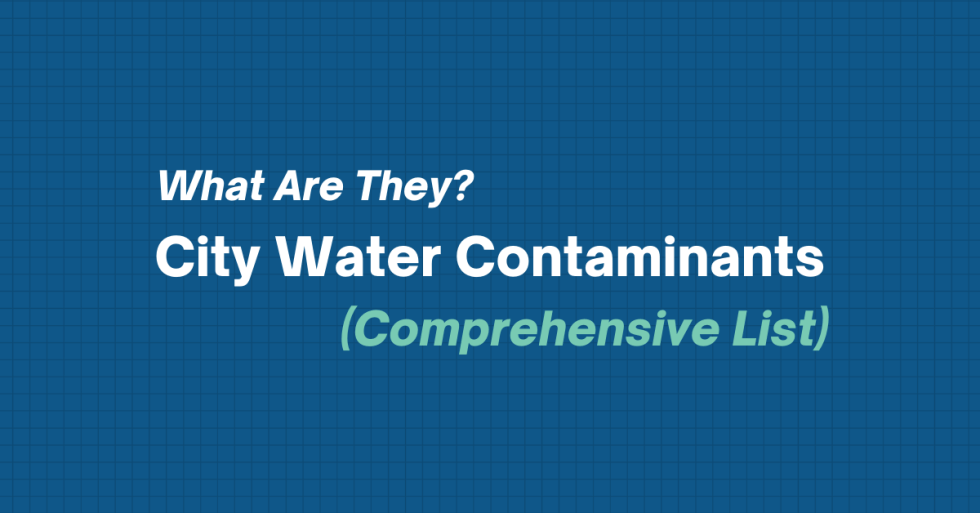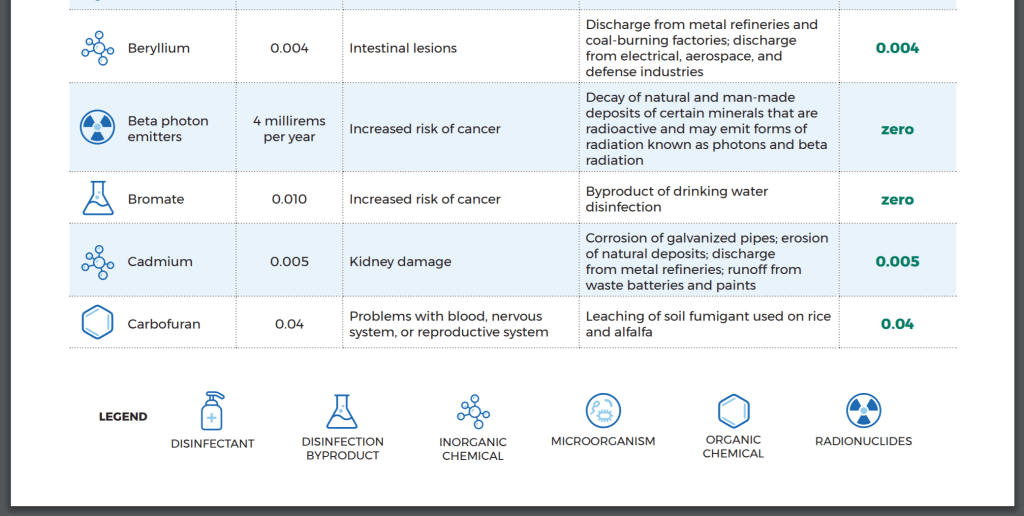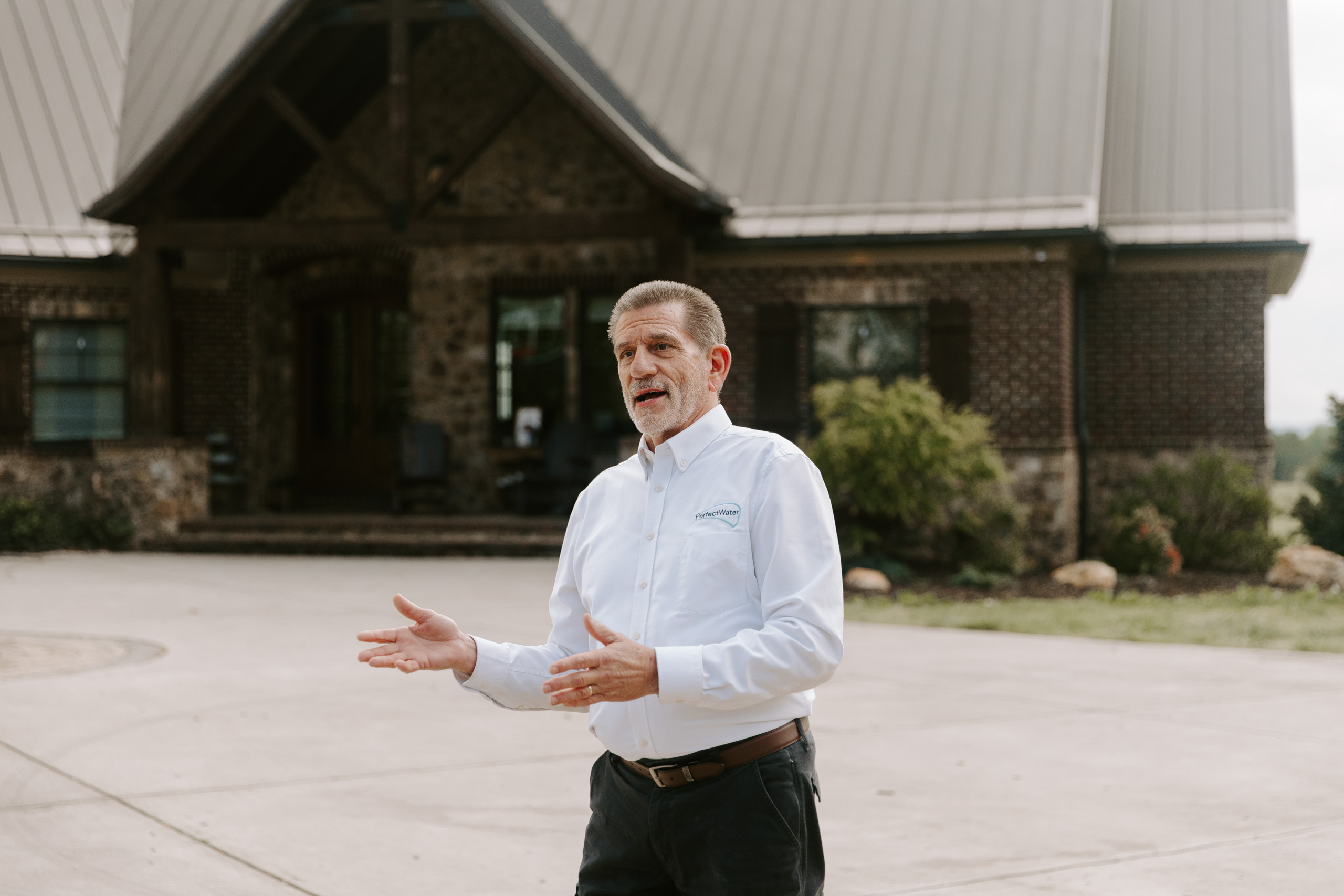A Comprehensive List of Common Municipal Water Contaminants

About 286 million Americans use and drink municipal water every day. Do you? Have you ever thought about what is in your water? There’s no way the water you drink every day could be unhealthy for you, right? What kind of contaminants can be in your water?
The Water Everyone Uses and Drinks
Municipal water, sometimes known as city water, is what most people in the U.S. use as their primary source of water in their homes. Because of this, municipalities collect, filter, and distribute thousands and thousands of gallons of water every day. In fact, Tennessee uses anywhere from 500 million to a billion gallons of water every day.
Due to the mass collection, filtration, and distribution of water, it would be costly to produce water that was high-quality and deliver that water to your home. Despite the many filtration challenges that would arise, much of America’s waterways are still galvanized iron pipe, maintaining high-quality through those would be nearly impossible.
With those considerations in mind, the EPA has set standards and regulations that municipalities must follow in regards to water quality, including water sample testing, etc.
There are two primary categories you should know about when it comes to the water you and your family drink, bathe in, wash with, use, and cook with every day. These two categories come straight from the EPA (Environmental Protection Agency), because the regulations and standards of municipal water is a federal matter.
The first category is contaminants that are known to exist and show up in municipal water that is regulated. And the second category is contaminants that are known to exist and show up in municipal water that is NOT regulated.
We believe it’s important to know what is in your water so keep reading. Just know once you have the knowledge, there is a solution. You can take control of your water.
About 286 million Americans use and drink municipal water every day. Do you? Have you ever thought about what is in your water? There’s no way the water you drink every day could be unhealthy for you, right? What kind of contaminants can be in your water?
Contaminants that are Regulated in Municipal Water
These regulations are called the National Primary Drinking Water Regulations (NPDWR), which are instituted and enforced by the EPA. According to the EPA, these are the primary standards and treatment techniques that protect public health by limiting the levels of contaminants in drinking water.
This is the National Primary Drinking Water Regulations document that anyone can find on the EPA website.

Information Regarding NPDWR:
MCL (mg/L) – Maximum Contaminant Level – The highest level of a contaminant that is allowed in drinking water under the NPDWR.
TT – Treatment Technique – A required process intended to reduce the level of a contaminant in the drinking water.
Public Health Goal or Maximum Contaminant Level Goal (MCLG) – This is the best case scenario on that particular contaminant level. Notice the MCLG is often different than the MCL.
Contaminants – This is a list of 88 contaminants that are regulated under the NPDWR. It includes disinfectants, disinfection byproducts, inorganic chemicals, microorganisms, organic chemicals, and radionuclides. These contaminants are present or expected to be present in public municipal water.
National Secondary Drinking Water Regulation – At the bottom of the NPDWR, a list of 15 contaminants is found under the name of the National Secondary Drinking Water Regulation. These regulations are non-enforceable guidelines that the EPA recommends to Municipalities but does not force them to adopt these standards.
Contaminants that are NOT Regulated in Municipal Water or the CCL 4
The Contaminant Candidate List 4, according to the EPA, “is a list of contaminants that are currently not subject to any proposed or promulgated national primary drinking water regulations, but are known or anticipated to occur in public water systems“.
There have been 4 iterations of the CCL, therefore the “CCL 4” is the 4th iteration.
Due to lack of mass filtration methods, pure cost of filtration, or there not being substantial enough evidence to be harmful to public health, these one-hundred and eleven contaminants are not regulated in any way.
The EPA states three criteria for a Contaminant to be put onto the NPDWR:
- The contaminant may have an adverse effect on the health of persons;
- The contaminant is known to occur or there is a substantial likelihood the contaminant will occur in public water systems with a frequency and at levels of public health concern;
- In the sole judgment of the Administrator, regulation of the contaminant presents a meaningful opportunity for health risk reductions for persons served by public water systems.
This is the two documents containing the CCL 4, Chemical Contaminants and Microbial Contaminants that are not regulated.
https://www.epa.gov/ccl/chemical-contaminants-ccl-4#main-content
https://www.epa.gov/ccl/microbial-contaminants-ccl-4
To reiterate, the two lists above are the Common Contaminant List 4 by the EPA. These are contaminants that are known or anticipated to occur in public water systems, but are currently not regulated at all.
Municipal Water Testing
Municipalities do not test their water with live results, they take samples and test those samples. So that means even with the contaminants that they do test for, the sample they acquired might be okay, but other contaminated water just went by without them having any way to know, and that water ends up in your home.
What is the Solution?
Municipalities do a great job at what is required of them. They provide water that meets the standards and requirements placed on them by the EPA. To provide high-quality water all the way into your home is implausible, with today’s technology and how the municipalities are set up, it can’t happen.
The only solution to having high-quality water throughout your home is individual water purification and filtration, for whole-house water and for drinking water. Or to get a whole new water source, like rainwater harvesting.
Ready to Take Control of Your Water Supply?
Don’t wait for water shortages or unreliable sources to disrupt your life. With our Rainwater Harvesting systems, you can enjoy a sustainable, reliable, and completely self-sufficient water solution tailored to your home’s needs.

